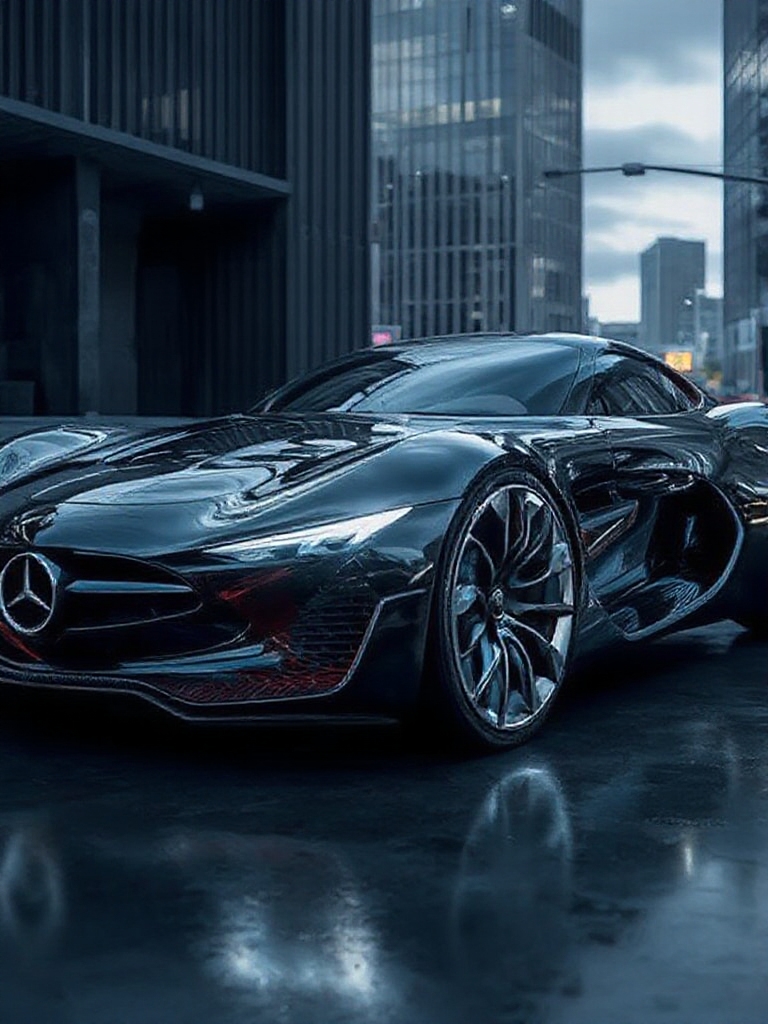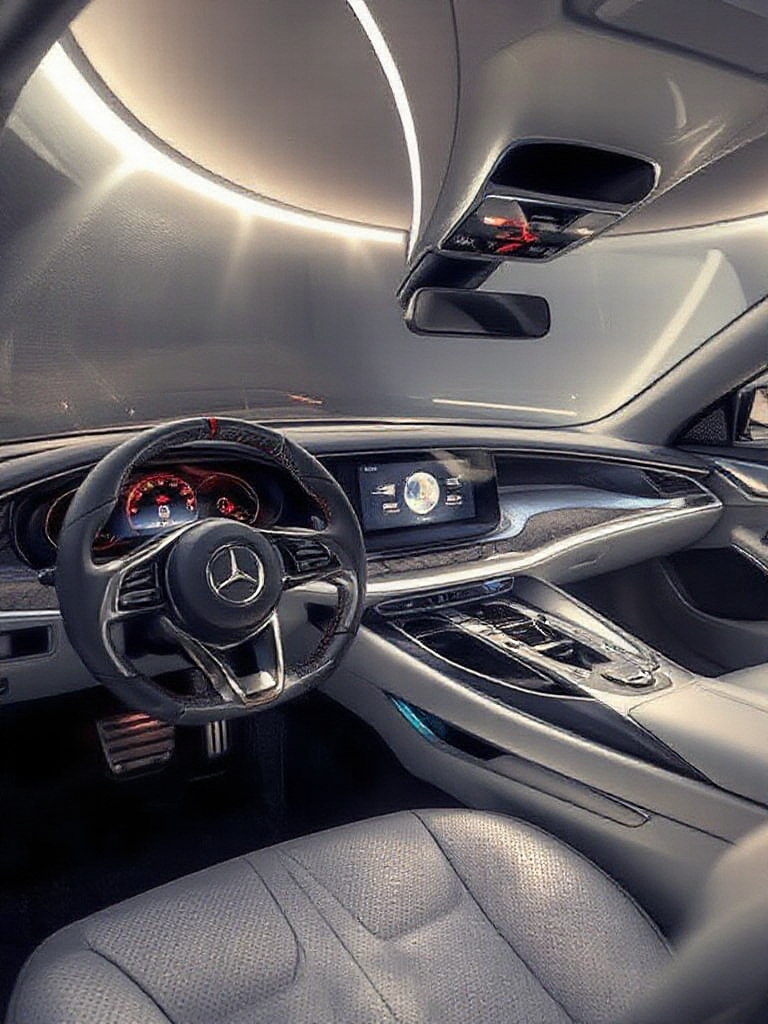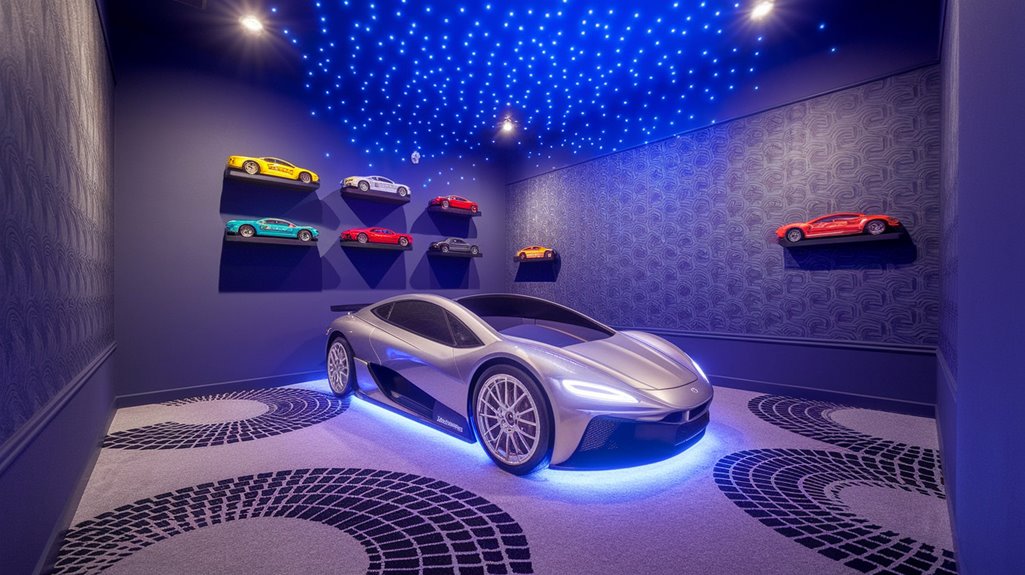While science fiction cinema of the 1980s predicted we’d all be driving flying cars by now, today’s automotive designs are pushing boundaries in ways those filmmakers never imagined.
You’ll find vehicles that can change color at the touch of a button, holographic displays that transform your windshield into an interactive command center, and bodies sculpted by AI to achieve perfect aerodynamics.
The intersection of art and engineering has created a new automotive language that’s redefining what’s possible on four wheels.
The Evolution of Automotive Design: From Past to Future
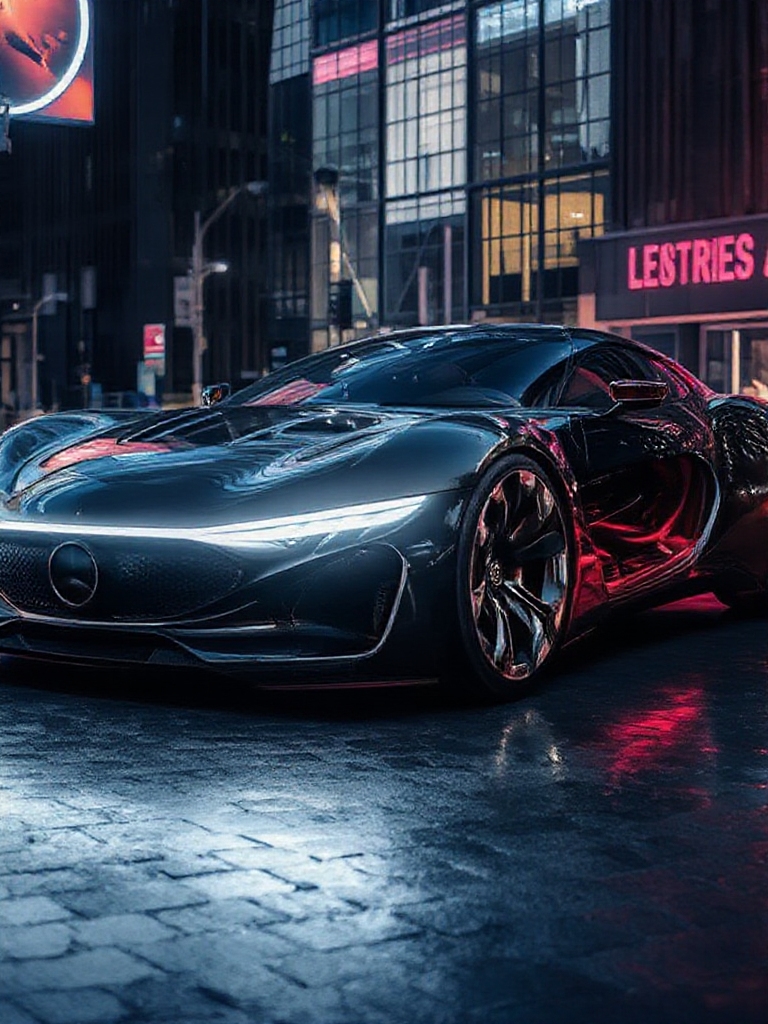
While today’s sleek vehicles might seem worlds apart from their ancestors, the fascinating journey of automotive design reveals how cars have evolved from simple horseless carriages to sophisticated machines of the future.
You’ll find that early automobiles were fundamentally carriage designs with engines, prioritizing function over aesthetics. The iconic Model T from Ford revolutionized the industry with its basic yet practical design.
As the Art Deco era emerged in the 1920s and 1930s, you’d notice a dramatic shift toward streamlined shapes and luxury materials.
The post-war period brought chrome-laden designs and iconic tailfins, capturing the era’s optimism. By the 1990s, you’d see computer-aided design transforming the industry, leading to aerodynamic forms and standardized platforms.
RELATED: How to Support Your Husband’s Dream of Designing Futuristic Cars!
Groundbreaking Exterior Features That Define Tomorrow’s Vehicles
As automotive design races toward the future, groundbreaking exterior features are transforming how we think about vehicles.
You’ll find illuminated grilles on cars like the Mercedes-Benz EQS, where LED technology isn’t just for visibility – it’s reshaping the entire front-end aesthetic.
The integration of smart materials, like BMW’s self-healing surfaces, means you won’t have to worry about minor scratches anymore.
Active aerodynamics adjust to your driving conditions, while sweeping rooflines and streamlined silhouettes cut through the air with unprecedented efficiency.
The taut shape design of modern luxury EVs demonstrates how form follows function in contemporary automotive engineering.
RELATED: Most Beautiful Concept Cars That Inspire Future Generations!
Revolutionary Interior Innovations Reshaping Driver Experience
Modern automotive interiors have undergone a groundbreaking transformation that you’ll immediately notice when stepping into today’s cutting-edge vehicles.
You’ll find yourself surrounded by seamless touchscreen controls, augmented reality displays, and intelligent voice assistants that respond to your commands with unprecedented accuracy.
The cockpit you’re sitting in isn’t just smart – it’s sustainable. From vegan leather seats to recycled materials throughout the cabin, you’re experiencing a perfect blend of luxury and environmental consciousness.
RELATED: How to Create a Futuristic Car-Themed Bedroom for Your Son!
Sustainable Materials and Eco-Friendly Design Elements

Today’s groundbreaking sustainable materials and eco-friendly design elements represent far more than just a response to environmental concerns.
You’ll find innovative solutions like polypropylene dashboards and bioplastic exteriors that aren’t just environmentally conscious – they’re transforming how cars look and perform.
Natural fiber composites derived from hemp and flax are making their way into door panels, while recycled metals and plastics are reducing the need for virgin materials across entire vehicle builds.
The integration of recycled polycarbonate materials in windows and roofs is revolutionizing vehicle safety and efficiency. The vehicle’s whisper-quiet wheels contribute to a more sustainable and peaceful urban environment.
What’s particularly exciting is how these sustainable choices are shaping futuristic aesthetics.
Performance Meets Aesthetics: The New Era of Speed
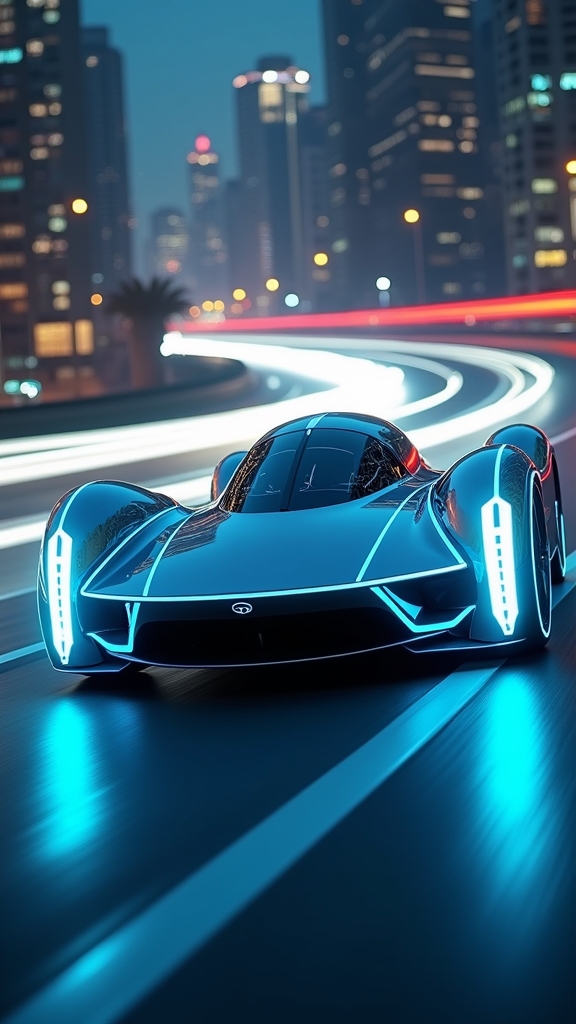
The remarkable fusion of performance and aesthetics in contemporary vehicles has ushered in an unprecedented era of automotive excellence.
You’ll find this marriage of form and function exemplified in cars like the 2026 Corvette Zora, where electric motors complement a twin-turbo V8 to deliver over 1,000 horsepower while maintaining sleek, aerodynamic profiles.
Today’s performance vehicles don’t just go fast – they’re technological masterpieces that’ll take your breath away. The Audi A6 E-Tron demonstrates this evolution with its 496 hp powertrains pushing the boundaries of electric performance.
Advanced composites reduce weight while LED lighting systems create striking visual signatures.
You’re witnessing a transformation where speed meets style: the Polestar 6’s 3.2-second sprint to 60 mph comes wrapped in futuristic design language, while the Cybertruck’s angular aesthetic incorporates groundbreaking e-ink technology for dynamic color changes.
Autonomous Technology Integration in Modern Car Design
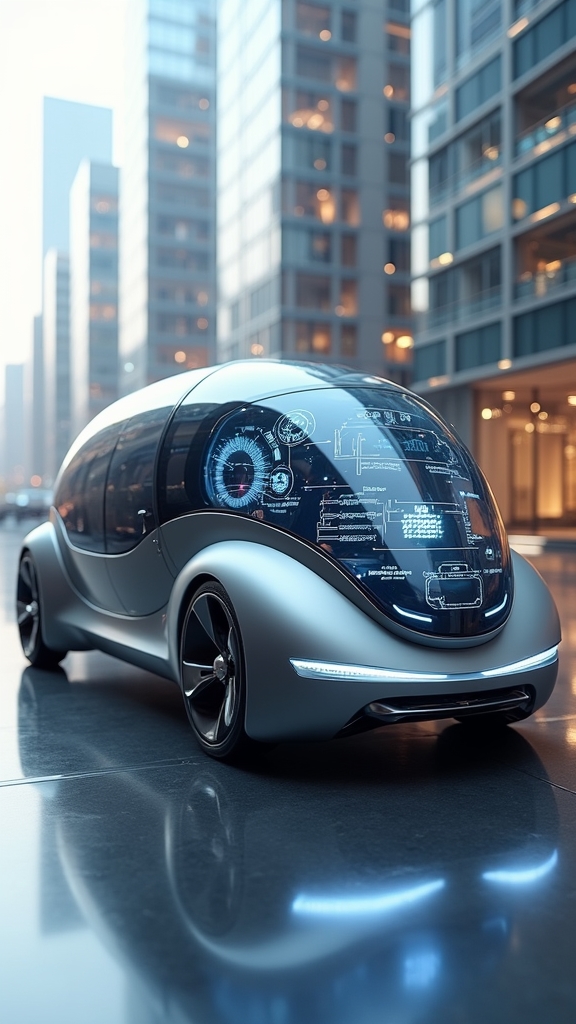
Beyond raw performance and striking aesthetics, autonomous technology has transformed how we’ll interact with tomorrow’s vehicles. You’ll notice this evolution through AI-powered controls and seamless connectivity that integrate with your smart devices, creating a personalized driving experience that adapts to your preferences.
As vehicles progress through autonomous levels, you’re witnessing the transformation of traditional cabins into living spaces. Major manufacturers are developing Level 4 vehicles that enable fully autonomous operation in defined areas.
Imagine your car’s interior morphing to suit different modes – from focused driving to relaxed entertainment. The integration of over-the-air updates ensures your vehicle’s systems stay current with the latest features and improvements.
You’ll find expansive pillar-to-pillar displays, retractable steering wheels, and multi-functional consoles that redefine the concept of a vehicle’s interior.
Design Elements Bridging Science Fiction and Reality
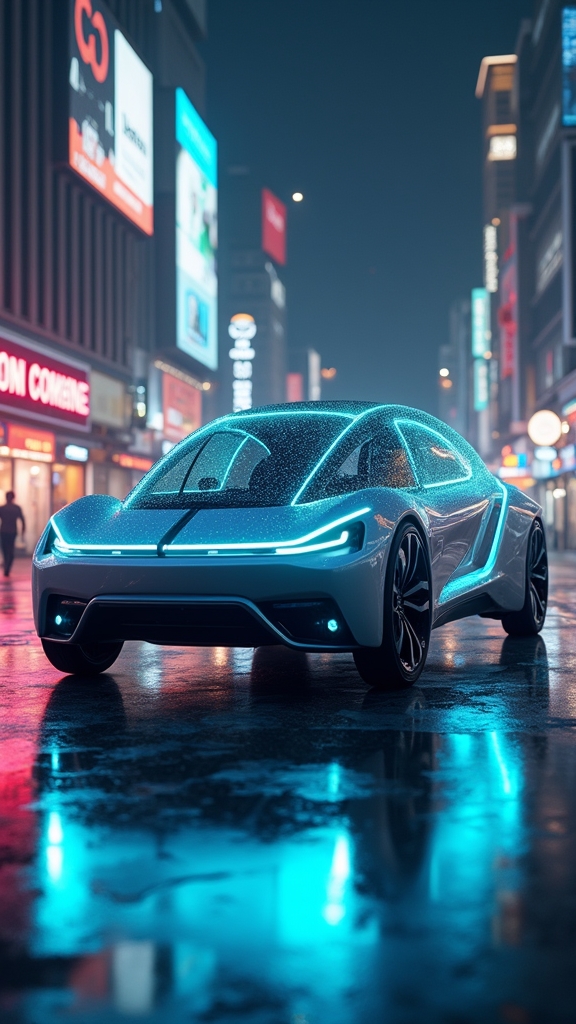
Modern automotive design has adopted science fiction’s most compelling visions, transforming once-fantastical concepts into tangible innovations you’ll find in today’s vehicles.
You’ll see this convergence in features like the Cybertruck’s angular, stainless steel body, reminiscent of vehicles from classic sci-fi films, and the integration of dragonfly doors that echo the dramatic entrances of futuristic concept cars.
Look closely at today’s vehicles, and you’ll notice how manufacturers have welcomed sci-fi-inspired elements like crystal laser headlights, color-changing surfaces, and augmented reality displays. The Mercedes Vision AVTR takes this further with its biometric connection that recognizes the driver’s breathing patterns.
These aren’t just aesthetic choices – they’re functional improvements that improve your driving experience. From biometric starting systems to gesture controls, the technology that once existed only in movies is now becoming standard in cutting-edge automotive design. These innovations serve as essential plot devices in our journey toward an advanced automotive future.

